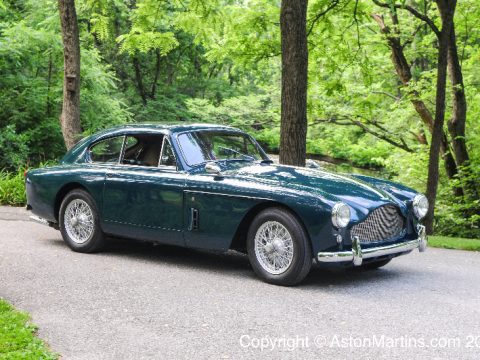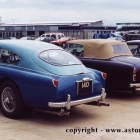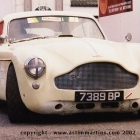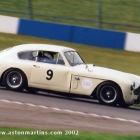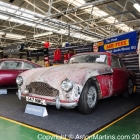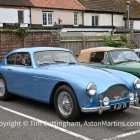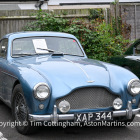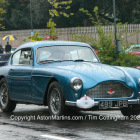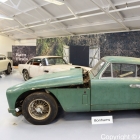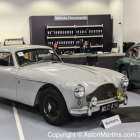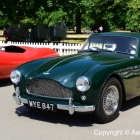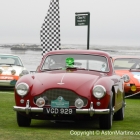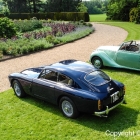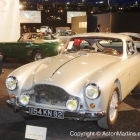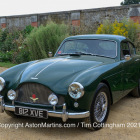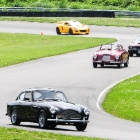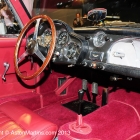The standard 3 litre (2922cc, twin SU carbs) engine fitted to the Mark III was designated as the DBA version and produced 162 bhp @5500 rpm although with the fitting of optional twin exhausts, this could be raised to possibly 178 bhp. A special series engine using three twin choke Webers, twin exhausts and special camshafts, called the DBB version was able to produce 195 bhp. Just to add more choice, a DBD version was also available with three SU carbs and producing 180 bhp.
This (below images) was the first production DB Mark III and was owned by David Brown himself. This particular car and the first examples of the DB Mark III have the rear wings and lights as seen on the Mark II. Most cars had a different design of rear wings which was altered to take the Humber Hawk rear light cluster, a feature which carried through to the first three series of the DB4.
Without doubt, the DB Mark III is the best looking car of the DB2 line. The style of the sculptured single piece bonnet can be followed through to the AM V8.
Production of the Mark III lasted just a shade over two years and actually overlapped the DB4 by seven months. Production of all variants during this time was 551 cars. This example was photographed at the 40th Anniversary meeting at Donnington Park in 1999.
You would not be surprised to find out that the Mark III was the heaviest of the Feltham Cars and indeed it is by about 160kg. But as it is also the most powerful of the line, the extra weight is more than cancelled out and thus the Mark III is a popular racecar. But during the mid to late 1950’s AML were using the DBR1 in sportscar racing; the Mark III was never raced by the factory. This car was photographed in the paddock and on the track at the 1997 and 1998 AMOC race meetings at Donnington Park.
If you are interested in the Mark III, you will very much enjoy this video featuring the prototype car , DP193



